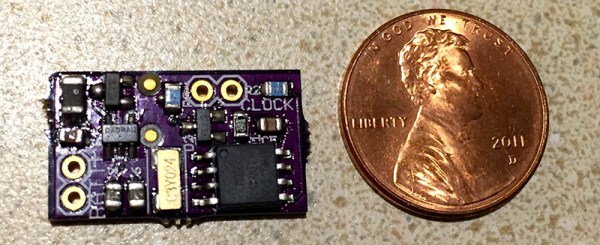Most of us know that a quartz clock uses a higher frequency crystal oscillator and a chain of divider circuits to generate a 1 Hz pulse train. It’s usual to have a 32.768 kHz crystal and a 15-stage divider chain, which in turn normally sits inside an integrated circuit. Not so for [Bobricius], who’s created just such a divider chain using discrete components.
The circuit of a transistor divider is simple enough, and he’s simply replicated it fifteen times in surface mount parts on a PCB with an oscillator forming the remaining square in a 4 by 4 grid. In the video below the break we can see him measuring the frequency at each point, down to the final second. It’s used as the timing generator for an all transistor clock, and as we can see it continues that trend. Below the break is a video showing all the frequencies in the chain.
This project is part of our awesome 2025 One Hertz Challenge, for all things working on one second cycles. Enter your own things that go tick and tock, we’d live to see them!
Continue reading “2025 One Hertz Challenge: A Discrete Component Divider Chain”











